Featured
Featured
-
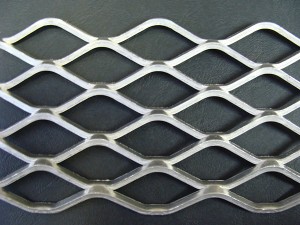
Wholesale China Fine Stainless Steel Mesh Manufacturers Suppliers – Stronger Expanded Metal Mesh Sheet – Chongguan
Made by slitting and stretching metal sheets to create diamond-shaped openings, Expanded Metal forms screens, window security panels and machine guards to name a few applications for this practical and versatile product line. In the decorative version of the product, shelving, signage, and ceiling tiles are among the most popular applications. Expanded Metal is supplied in a Standard (Raised) diamond pattern or a Flattened diamond pattern. Grating and Catwalk Expanded Metals are also part of ... -
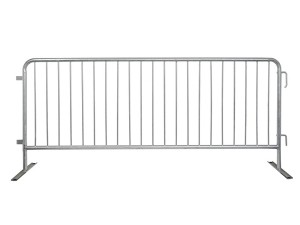
Wholesale China Temporary Garden Fence Factory Quotes – Barricade for Pedestrian and Vehicular Traffic – Chongguan
Crowd control barriers (also referred to as crowd control barricades, with some versions called a french barrier or bike rack in the USA), are commonly used at many public events. Crowd control barriers have been designed for use at events that need to accommodate for a larger crowd. They are designed to physically discourage transgression and encourage directional order and crowd control. Their flat feet feature (to prevent trip hazard) provides a quick and efficient solution in any situatio... -
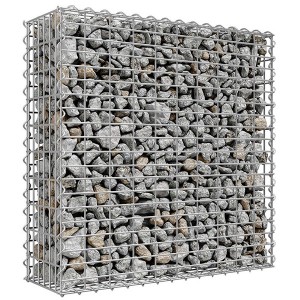
Wholesale China Welded Mesh Security Fencing Exporters Companies – Welded Wire Mesh Gabion Box – Chongguan
Welded Mesh Gabion Boxes Sizes: Nominal Box sizes (m) No. of diaphragms (no.) Capacity per box (m3) Standard mesh sizes (mm) Standard wire diameter (mm) 1.0×1.0×0.5 Nil 0.50 50 x 50 75 x 75 100 x 50 100 x 100 Heavily Galvanised or Aluzinc coated wire 2.20, 2.50, 2.70, 3.00 4.00, 5.00 OR Polymer coated on Heavily Galvanised or Aluzinc coated wire 2.5/2.8, 2.7/3.0, 3.0/3.3, 4.0/4.3, 5.0/5.3 1.0×1.0×1.0 Nil 1.00 1.5×1.0×0.5 Nil 0.75 1.5×1.0×1.0 ... -
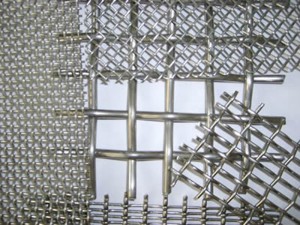
Wholesale China Wire Reinforcing Mesh Exporters Companies – Crimped Wire Mesh For Industry – Chongguan
Black wire, spring steel wire, manganese steel wire and stainless steel wire. High tensile screen cloth is commonly used in heavy duty applications for scalping and sizing of rocks, aggregates, limestone, etc. They are weaved in sizes to suite most vibrating screens and available in: * High Tensile Steel—Abrasion resistance * Stainless Steel—Corrosion resistance * Monel, Brass, etc—General applications Crimped Wire Mesh is made through crimping mesh machine with pre-crimped ... -

Wholesale China Hydraulic Breather Filter Manufacturers Suppliers – Sintered Mesh of High Filter Efficiency – Chongguan
Raw Material: SS 316L, SS 304 Filter Rating Range: 0.5 Micron ~ 2000 Microns Filter Efficiency: > 99.99 % Number of Layers: 2 Layers ~ 20 Layers Operation Temperature: ≤ 816 ℃ Length: ≤ 1200 mm Width: ≤ 1000 mm Regular Size (Length*Width): 500 mm*500 mm,1000 mm*500 mm,1000 mm*1000 mm,1200 mm*1000 mm Thickness: 0.5 mm,1 mm,1.5 mm,2 mm,3 mm,5 mm or others 5-Layer Sintered Wire Mesh Sintering is a process that improves the characteristics of woven wire mesh by bonding the contact points of al... -

Wholesale China Wire Mesh Garden Fence Factory Quotes – Galvanized Square Wire Mesh for Screening – Chongguan
Low carbon steel wire mesh is the most common plain steel alloy used in manufacturing industrial wire cloth screens due to its tensile strength and high impact resistance. Primarily comprised of iron, low carbon grades is q195. Low abrasion resistance and low corrosion resistance may limit usage in certain applications, however a wide variety of special protective coatings may be applied to improve resistance. Galvanizing (before or after) is the most economical way to protect against corrosi... -
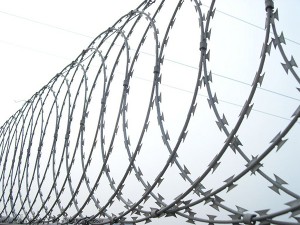
Wholesale China Wholesale Temporary Fence Exporters Companies – Razor Barbed Wire For Security Fence – Chongguan
Razor Blade Type and Specification Reference number Thickness/mm Wire Dia/mm Barb length/mm Barb width/mm Barb spacing/mm BTO-10 0.5±0.05 2.5±0.1 10±1 13±1 26±1 BTO-12 0.5±0.05 2.5±0.1 12±1 15±1 26±1 BTO-18 0.5±0.05 2.5±0.1 18±1 15±1 33±1 BTO-22 0.5±0.05 2.5±0.1 22±1 15±1 34±1 BTO-28 0.5±0.05 2.5 28 15 45±1 BTO-30 0.5±0.05 2.5 30 18 45±1 CBT-60 0.5±0.05 2.5±0.1 60±2 32±1 100±2 CBT-65 0.5±0.05 2.5±0.1 65±2 21±1 100±2 Outer diameter No. of loops Standard len... -
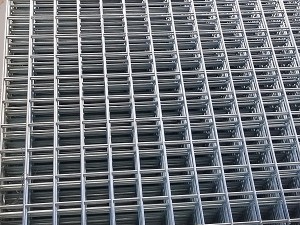
Wholesale China Welded Iron Mesh Manufacturers Suppliers – Welded Wire Mesh Panel Sheet – Chongguan
Low carbon steel wire(Q195,Q235), stainless steel wire • Black welded mesh panel (paint oil) without any surface treatment. • Electrical galvanized before/after welding (Electric galvanized welded mesh panel) • Hot deep galvanized before/after welding (hot deep galvanized welded mesh panel) • PVC coated welded mesh panel • PVC Powder painted mesh panel 1. Galvanized Welded Mesh Panels offer excellent characteristics such as corrosion resistance, oxidation resistance, acid resistance, alkali r... -

Wholesale China Fabric Filter Factory Quotes – Sintered Mesh of High Filter Efficiency – Chongguan
Raw Material: SS 316L, SS 304 Filter Rating Range: 0.5 Micron ~ 2000 Microns Filter Efficiency: > 99.99 % Number of Layers: 2 Layers ~ 20 Layers Operation Temperature: ≤ 816 ℃ Length: ≤ 1200 mm Width: ≤ 1000 mm Regular Size (Length*Width): 500 mm*500 mm,1000 mm*500 mm,1000 mm*1000 mm,1200 mm*1000 mm Thickness: 0.5 mm,1 mm,1.5 mm,2 mm,3 mm,5 mm or others 5-Layer Sintered Wire Mesh Sintering is a process that improves the characteristics of woven wire mesh by bonding the contact points of al... -
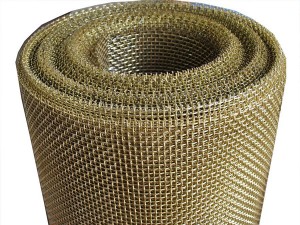
Wholesale China Wire Mesh Manufacturers Suppliers – Factory Supply Brass And Copper Wire Mesh – Chongguan
Brass wire mesh is a woven wire mesh where warp and weft (woof / filling) wires are interlaced at right angles. In other words, each warp wire and each weft wire pass over one, two or other amounts of wires, and then under the next one, two or other amounts of wires. Brass is an alloy that is comprised of copper and zinc, and, like copper, brass is soft and malleable and is attacked by ammonia and similar salts. As a wire mesh, the most commonly available brass woven wire mesh is referred to ... -

Wholesale China Wire Mesh Fence Usa Factories Pricelist – Factory Supply Brass And Copper Wire Mesh – Chongguan
Brass wire mesh is a woven wire mesh where warp and weft (woof / filling) wires are interlaced at right angles. In other words, each warp wire and each weft wire pass over one, two or other amounts of wires, and then under the next one, two or other amounts of wires. Brass is an alloy that is comprised of copper and zinc, and, like copper, brass is soft and malleable and is attacked by ammonia and similar salts. As a wire mesh, the most commonly available brass woven wire mesh is referred to ... -
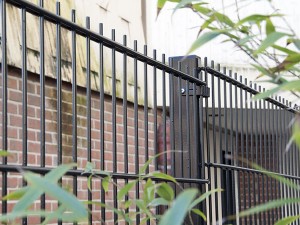
Wholesale China Metal Grid Fence Quotes Pricelist – Bouble Wire Fence for Landscaping – Chongguan
The special specifications are available on request. Double Wire Fence Height × Width Panel mm Mesh Size mm Wire Diameter Post of Height mm Wire Dia mm Wire Dia mm Wire Dia mm 630×2500 50×200 8×2 + 6 6×2 + 5 6×2 + 4 1100 830×2500 50×200 8×2 + 6 6×2 + 5 6×2 + 4 1300 1030×2500 50×200 8×2 + 6 6×2 + 5 6×2 + 4 1500 1230×2500 50×200 8×2 + 6 6×2 + 5 6×2 + 4 1700 1430×2500 50×200 8×2 + 6 6×2 + 5 6×2 + 4 1900 ...
